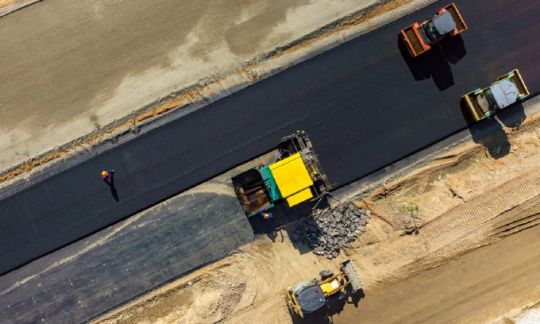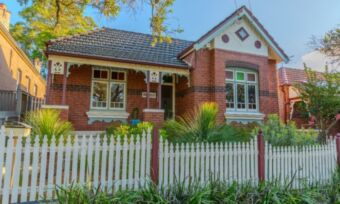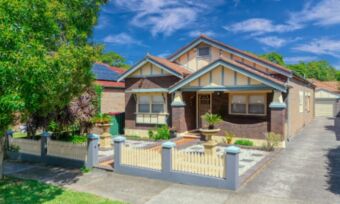Major infrastructure projects and the property markets that may benefit

New roads, hospitals and universities can create real estate booms. Terry Ryder looks at some of the major infrastructure projects planned across the country and identifies the locations likely to benefit.
Infrastructure spending can be the most powerful force in residential real estate. It can transform local economies and generate real estate booms.
Major infrastructure projects can elevate the appeal of locations by improving the accessibility or amenity of an area. They can generate big economic activity and jobs during construction and inspire ongoing benefits during their operational phase.
Out of that comes demand for real estate.
The big-ticket items are transport infrastructure (new or improved motorways or rail links) and education/medical infrastructure (universities and hospitals).
The Sunshine Coast provides a compelling example. For decades, this was essentially a tourism economy, subject to the vagaries of weather, seasonal fluctuations and economic disruption. Over the past five years, major infrastructure projects have transformed it into an international city with a broader, stronger economy.
A $5 billion health precinct, both in its construction and its ongoing operation, has poured money into local businesses, created thousands of jobs, improved the appeal of this popular lifestyle region and brought new people to live and work on the Sunshine Coast.
This event alone has generated massive demand for the local property market, which was on a boom trajectory long before the national boom started. Top-end suburbs such as Minyama and Sunshine Beach have seen property values double in three years.
But there’s been a lot more. The airport has been upgraded to international status, the undersea cable provides the fastest internet link to Asia from the east coast, $1 billion has been invested in the Bruce Highway and a new 53-hectare CBD is being created in Maroochydore.
There’s a strong argument that the most powerful philosophy for profitable property investment is to follow the infrastructure trail. Put another way, buy property that lies in the path of progress.
Australian infrastructure projects
I take a look at some of the major Australian infrastructure projects planned and the property markets likely to benefit.
National
The project: The Inland Rail Link
Estimated cost: $15 billion
Status: Under construction
Three states are impacted by this game-changing transport infrastructure project. It links Melbourne to Brisbane via regional NSW.
We’ve already seen its real estate impact, with locations along the route receiving big uplifts in their real estate markets when construction begins in their area, especially in regional centres that are destined to be key pivot points along the route. Further impetus will come when the Inland Rail Link is up and running.
The project was officially launched at the NSW regional centre of Parkes in December 2018.
Construction of the Parkes to Narromine section in NSW is now complete. According to Australian Rail Track Corporation (ARTC), which is overseeing the project, 1,800 people worked on this phase and over $100 million was spent with 99 local businesses.
CoreLogic data suggests the median house price for Parkes has increased 43% in the past three years. We are likely to see further growth when the completed rail link is up and running, as Parkes is a key hub along the route.
ARTC is currently building the stage from Narrabri to North Star near the Queensland border. The median house price in Moree, which is on the route where the current stage is being constructed, rose 40% in 2021. Further growth is expected when the rail route is completed.
The main hub for Queensland will be Toowoomba, the nation’s second-largest inland city (after Canberra). It’s being heavily targeted by investors, following the completion of the new Wellcamp Airport and in expectation of the impact of the planned rail hub nearby. This is the location set to benefit the most in Queensland – unless a more recent proposal to extend the link all the way to Gladstone in Central Queensland is implemented.
New South Wales
The project: Western Sydney International (Nancy-Bird Walton) Airport
Estimated cost: $5 billion plus $11 billion for rail link
Status: Under construction
In each of our major cities, the biggest employment nodes include the commercial-industrial precinct adjoining the city’s main airport.
In Brisbane, the Australia TradeCoast precinct which adjoins the Port of Brisbane and the domestic and international airports is a commercial hub with 60,000 jobs. According to Brisbane City Council, Australia TradeCoast is forecast to employ 110,000 people by 2026 and contribute $9.4 billion to the Queensland economy.
This demonstrates that major airports can have a significant impact on local property markets, because of the jobs created in the commercial-industrial precincts surrounding them.
The 11,200-hectare Western Sydney airport precinct, to be known as “Aerotropolis”, is predicted by the NSW Department of Planning to create 200,000 new jobs and demand for up to 60,000 new homes.
In September 2020, the NSW Government approved the rezoning of 6,500 hectares surrounding the airport, allowing for the development of 10 precincts. The first five precincts – Aerotropolis Core, Badgerys Creek, Northern Gateway, Agribusiness and Wianamatta-South Creek – provide the potential for 100,000 jobs. The $700 million Aspect Industrial Estate approved in June 2022 will be part of the Aerotropolis.
The airport is due to open to international, domestic and air cargo services in 2026. Accompanying the airport project are new roads, rail links and other infrastructure.
The Western Sydney Airport Metro line will see the addition of a 23-kilometre line to join St Mary’s station to the new airport and Aerotropolis. This is expected to generate 14,000 jobs.
The suburbs of the City of Blacktown are well situated to benefit from all this. Blacktown’s population is predicted to grow to 569,000 by 2036 (from about 385,000 now) and the Blacktown City Council says it will need another 180,000 dwellings by then.
Suburbs in the City of Blacktown already rank highly within the Greater Sydney market in terms of long-term value growth – most have recorded median house price growth averaging 9%to 10% per year in the past decade.
Well-situated suburbs include Mount Druitt and Blacktown itself, which are both key suburban hubs already with substantial exciting infrastructure and amenities.
Victoria
The project: Multiple transport projects
Estimated cost: $80 billion-plus
Status: Some under construction
The Victoria State Government is investing massively in rail and road infrastructure in Melbourne. Seven key projects, many of them under construction, have an estimated total cost above $80 billion.
They include the $50 billion Suburban Rail Loop (SRL), with SRL East now under construction. Other big-ticket developments with work underway include the $11 billion Metro Tunnel, the $10 billion West Gate Tunnel, the $2.1 billion Sunbury Line Upgrade, as well as $2.5 billion in suburban road upgrades.
Others in planning are the $10 billion Melbourne Airport Rail line and the $4 billion Geelong fast rail service.
Many precincts across the Greater Melbourne area will benefit from the improved transport links, as well as the economic activity and jobs generated by the construction, but the City of Brimbank is perhaps the best situated to be boosted, both directly and indirectly.
The Brimbank LGA, which includes suburbs such as Sunshine, St Albans, Deer Park and Keilor, is already an infrastructure mecca for the middle-ring western suburbs, with major hospitals, university campuses and an intermodal transport hub at Sunshine Railway Station.
This has helped make Brimbank a centre for real estate growth, with most suburbs recording median house price growth averaging 7% to 8% per year over the past decade – but many of the suburbs remain relatively affordable with house medians in the $600,000s and $700,000s.
Direct future impacts will come from the Metro Tunnel, the Melbourne Airport Rail link and the SRL – which will interconnect with the Sunshine transport hub.
Queensland
The project: Coomera Connector (Second M1)
Estimated cost: $2.16 billion (stage one)
Status: Under construction
Brisbane and South-East Queensland continue to lead the nation on population growth from internal migration. This means the region needs to constantly upgrade its infrastructure.
The 2021 Census revealed Brisbane is our fastest-growing capital city: its population increased by 111,670 people in five years.
Hosting the 2032 Olympics brings further pressure because sports facilities will need investment and transport infrastructure will need to be upgraded. The Gold Coast and the Sunshine Coast will host multiple Olympic events, as well as Brisbane, so road and rail links will need work.
One of the big-ticket items is already underway – the duplication of the M1 linking Brisbane to the Gold Coast, which continues to struggle with the demands of the growing population. The Gold Coast has long been a population growth star and is projected to swell from about 625,000 (2021 Census) to one million within 20 years.
Stage one works are underway on a second motorway, starting with the Coomera Connector. The State and Federal Governments have pledged $2.16 billion toward the Coomera Connector – which will be a 45-kilometre six-lane motorway linking Nerang on the Gold Coast to Loganholme within Logan City. It is hoped that it will remove 60,000 cars from the M1 each day.
Suburbs along the proposed path of the new motorway have already recorded strong house price growth pegged to improved infrastructure in the Coomera growth corridor stretching north from the Gold Coast towards Logan City, the southern part of the Greater Brisbane area.
Median house prices have risen 18% in Ormeau ($650,000), 26% in Pimpama ($610,000) and 35% in Oxenford ($745,000).
Another of the big projects under construction is the $1.5 billion Westfield Coomera Town Centre, where stage 1 has opened. The precinct promises to create 1,200 jobs during construction and around 3,300 jobs per year once fully operational.
South Australia
The project: North-South Corridor
Estimated cost: $15 billion
Status: Under construction
The North-South Corridor is perhaps the most long-standing continuous infrastructure project in the nation, with its first component happening in 2010 and final completion expected in 2030. This is a series of component motorways travelling through Adelaide which ultimately will form a continuous 78-kilometre link from Old Noarlunga in the outer southern suburbs through to Gawler on the northern fringes.
Comprising the Northern Expressway, the North-South Motorway and the Southern Expressway, parts of the corridor are still under construction or in planning. By 2030, when all these major road links should be completed, it’s expected to take only one hour to travel from Adelaide’s southern tip to its northern outskirts.
Sections completed to date at a cost of around $5 billion include the Northern Expressway (2010), South Road Superway (2014), Southern Expressway Duplication (2014), Torrens Road to River Torrens (2018), Northern Connector (2020), Darlington Upgrade (2020) and Regency Road to Pym Street (2021).
A major future stage is the T2D (Torrens to Darlington) section, estimated to cost close to $10 billion. This would include 10.5 kilometres of motorway, including seven kilometres of twin three-lane tunnels.
Given that this ongoing project spans the full length of the Greater Adelaide area, there are few real estate precincts that haven’t benefited from the improved linkages. But arguably the greatest impact has been in the north, where there are numerous major employment zones, including the Port Adelaide precinct, the Edinburgh Defence precinct and major commercial-industrial estates which have thrived on better transport links.
The LGAs of Playford and Salisbury in the northern suburbs offer some of the cheapest real estate in capital city Australia, despite big growth in the past two years. This means it offers the holy grail for many buyers – affordability and proximity to places of work.
In the past 12 months, strong uplift has occurred in suburbs such as Parafield Gardens (up 25% to $455,000), Elizabeth Vale (up 27% to $330,000) and Munno Para (up 35% to $330,000).
Western Australia
The project: Western Trade Coast expansion
Estimated cost: $4-$5 billion
Status: Under construction or Proposed
Two of the busiest property markets in Perth are the neighbouring LGAs of Rockingham and Kwinana, where affordability and proximity to major employment zones are key attractions for buyers on a budget.
They benefit from proximity to the Western Trade Coast (WTC) industrial area. Stretching from central Perth to the southern suburb of Rockingham and nestled between the Kwinana Freeway and the ocean, the WTC is Perth’s biggest suburban employment zone.
At the end of 2021, a Ministerial Taskforce was established to create an economic framework for the WTC’s future. The WTC currently supports 13,000 jobs and will provide around 22,000 jobs upon completion.
This includes the heavy industry Kwinana Industrial Area, the Rockingham Industrial Zone, the East Naval Base factory area, the Latitude 32 Industry Zone and the Australian Marine Complex. And it is currently the focus of major new investment, set to create more jobs and local real estate demand.
Chinese company Tianqi Lithium has begun to build Australia’s first battery-grade lithium hydroxide plant, with the $700 million lithium processing plant based at Kwinana. Wesfarmers Ltd, with joint venture partner SQM, is developing a $1.9 billion lithium plant at Mt Holland in the Goldfields region, with plans to develop a refinery at Kwinana. Woodside Petroleum is planning the $1 billion H2Perth development, a hydrogen and ammonia plant in the Kwinana precinct, with construction due to start in 2024.
Suburbs well-placed to benefit include Medina (median price $285,000), Orelia ($305,000), Rockingham ($440,000) and Safety Bay ($450,000).
Cover image source: Stockr/Shutterstock.com
 About Terry Ryder
About Terry Ryder
Terry is the founder and Managing Director of hotspotting.com.au, which he created in 2006 to help investors find the best places to buy. Terry has been a specialist researcher and writer on Australian residential property in a career spanning four decades. During that time he has published four books.
This article was reviewed by our Editorial Campaigns Manager Maria Bekiaris before it was updated, as part of our fact-checking process.

The comparison rate for all home loans and loans secured against real property are based on secured credit of $150,000 and a term of 25 years.
^WARNING: This comparison rate is true only for the examples given and may not include all fees and charges. Different terms, fees or other loan amounts might result in a different comparison rate.
 Owner occupied
Owner occupied
 20% min deposit
20% min deposit
 Redraw facility
Redraw facility
Try our Home Loans comparison tool to instantly compare Canstar expert rated options.





